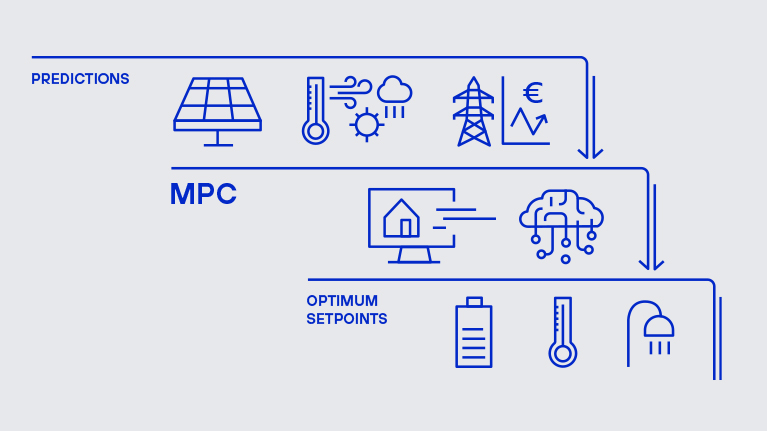Artificial intelligence to optimise the use of renewables on islands
The Tekniker technology centre is developing a cloud solution to monitor energy demand by analysing a number of variables such as household energy consumption, photovoltaic energy production, climatology or population changes.

Renewables are destined to renovate energy consumption on these islands where, compared with mainland Spain, power could become 400% more expensive because its depends on the energy market where emissions of polluting gases grow due to the intensive use fossil fuels.
The implementation of renewable energy sources (RES) in this geographic area in the form of, for instance, photovoltaic power is constrained by a lack of solutions capable of guaranteeing efficacious and resilient management actions adapted to parameters such as the weather and population changes on the islands.
In this regard, predictive technologies based on AI allow you bring together all of these variable conditions to generate the recommendations required in each specific case with a view to determining an optimum profile to be applied and automated on equipment delivering renewables. The ultimate goal is to maximise the use of the amount of energy produced and store any surplus power to be used at a later stage, when no renewables are available or whenever the cost of energy is too high. Surplus power, moreover, can be used to manage thermal equipment such as HVAC systems or heat pumps.
The Tekniker technology centre, a member of the Basque Research and Technology Alliance (BRTA), has an extensive amount of experience in applying AI solutions. It is within the framework of the European REACT project that the organisation has been involved in the development of a cloud platform that predicts and monitors energy demand on the islands by means of various analytical services using physical modelling techniques, predictive control models, artificial intelligence and machine learning.
Thanks to these techniques, the platform is able to manage energy that is generated and eventually stored more efficiently. The ultimate goal is to maximise the use of clean energy generated and to automate equipment so that generation and consumption are allowed to converge at an individual and community level.
Semantic technologies correlate and integrate the data and the models managed by the platform.
Ignacio Lázaro, a Tekniker researcher, explains that the ultimate goal is to optimise how renewables are used by adapting energy demand to production periods via flexible equipment automation or by implementing recommendations focused on optimising power management actions from an individual and community perspective. By optimising the way power is used, clients will spend less and the ecological footprint will be lessened thanks to a reduction in greenhouse gases.”
Interactions via a mobile app
A mobile app is used for user-platform interactions (also available on a website) and allows you to monitor the status of a facility and receive notifications and recommendations to foster flexible decision making to better address energy consumption.
“At Tekniker we have developed visualisation interfaces for the app and the website. The aim of the mobile app is to provide users with a visualisation tool that shows the facilities and provides a participative pathway to manage energy efficiently based on any recommendations received. The web is aimed at energy management profiles such as Local Community Energy Managers to monitor the overall status of any facilities that form part of a community”, says the Tekniker researcher.
Consequently, the technology centre contributes with its experience in terms of the different technologies used in the project to acquire equipment data by means of an Energy Gateway, define semantic ontologies associated with the heterogenous information managed by the platform and provide predictive and modelling techniques that form part of the analytical services delivered in addition to recommendations concerning management actions and visualisation tools so that users can become actively involved flexible energy management processes.
The REACT initiative (Renewable Energy for self-sustAinable island CommuniTies) will be in operation for 4.5 years on three small pilot islands covering several climatic regions, each one featuring different energy infrastructures and regulatory frameworks: La Graciosa in the Spanish Canary Islands, Inis Mór in the Irish Alan islands and San Pietro in Sardinia, Italy. A scalability plan will also be submitted for another cinco larger islands, namely, Lesbos, Gotland, Isle of Wight, La Reunión and Mallorca. Once the project comes to an end, a proposal will be submitted to allow these facilities to be managed by a Local Energy Community in order to achieve energy independence for the above mentioned islands.
With funding from the EU programme H2020, the project has a consortium made up of 25 companies from 11 European countries.
This project is co-funded by the European Commission under the " LC-SC3-ES-4-2018-2020 Building a low-carbon, climate resilient future: secure, clean and efficient energy” under Grant agreement No. 824395.
